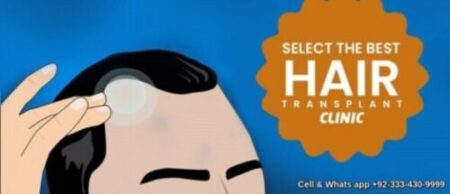Among the most quickly changing treatments innovation in hair transplantation is always improving. Recent technological improvements and the use of follicular unit grafts have elevated this surgery to a new level of success. More balding men and women are turning to surgery because of its ability to provide outcomes that seem quite natural.
As transplants have progressed, they may now enable people who are suffering from baldness to restore their self-confidence and appear younger and healthier than they ever have before. A natural-looking outcome may now be achieved with the transfer, even by specialists, as opposed to the doll-like appearance that was once the norm.
- Robots in hair restoration surgery
These are ARTAS Robotic Systems in their simplest form. A less invasive robotic outpatient ace restoration treatment has never been available before. Assisting the process is an experienced physician who utilizes sophisticated algorithms to choose individual hairs from the patient’s back of the head and transfer them to balding regions. While producing healthy grafts without leaving a linear scar on the patient’s donor site, this two-step dissection technique is the only one of its kind on the market today.
- Treatment of hair loss with stem cells
The most recent ace restoration study shows that stem cells can boost ace growth. PRP (platelet-rich plasma) therapy involves spinning the patient’s blood down to the stem cells in platelets and injecting them into the recipient area of the head to promote ace growth in the recipient.
- Laser hair growth treatments in Pakistan
As another ace transplantation procedure, low-grade lasers are used on patient heads to improve beauty and health. 30 minutes, three times a week is the suggested amount of time to spend on it.
- Expansion of tissue
By placing a tissue expander under the skin, doctors can reduce the size of the bald region of the patient’s head. After a few weeks, the tissue expander expands, causing the scalp’s skin to spread out.
There’s a reduced chance of infection after ace transplant surgery because of contemporary improvements in surgical methods and technology. Despite this, the possibility of infection has not been completely removed, according to experts. Infection after surgery is always a possibility, even if it is small.
For the most part, infections may be prevented and treated if they arise. As a consequence of proper infection therapy, a follicle transfer operation can be more successful. The negative effects of ace restoration surgery tend to worsen rather than alleviate after a week. These infections can have a negative influence on the results of your operation and your overall health. A donor site infection can lead to unattractive scars and poor ace regrowth in the donor area. Hair loss on a region of the scalp that shouldn’t be losing healthy ace might happen from the illness.
Innovation in hair transplantation is a surgical procedure in which ace follicles are removed from one area of the body and transplanted to another portion of the body that is bald or balding. Male pattern baldness is the primary indication for the usage of this procedure. There are currently no ways for harvesting and transplanting of it “follicular units” in their native groups. It’s termed follicular unit transplantation (FUT). Strip harvesting and follicular unit extraction are two methods for collecting donor grafts (FUE).
Procedure
- Assessment and planning before surgery
At an initial consultation, the surgeon analyzes the patient’s scalp, discusses their preferences and expectations, and advises them on the best approach (e.g. single vs. multiple sessions) and what results might reasonably be expected.
For several days before surgery, the patient refrains from using any medicines which might result in intraoperative bleeding and resultant poor grafting. Alcohol and smoking can contribute to poor graft survival. Postoperative antibiotics are commonly prescribed to prevent wound or graft infections.
- The harvesting process
Transplants are conducted as an outpatient procedure, with light sedation (optional) and local anesthetic administered by injection. Before the donor scalp is taken, the scalp is shampooed and treated with an antimicrobial agent.
There are a variety of methods for harvesting ace follicles, each with its pros and cons, and there is no one best method. Due to the angle at which hair follicles develop, transplanted tissue must be removed at the same angle.
- Using a strip harvesting method
Follicular unit transplantation, or FUT, is also known as Follicular Unit Transplantation (FUT). Surgeons extract skin from the posterior scalp, in a location with good ace development to create a shaved-off section. From the donor location, strips of bearing tissue can be removed using a scalpel with a single blade, a double blade, or three blades. It is important to design each incision such that only undamaged ace follicles are removed from the scalp. Aides dissect follicular unit grafts, which are tiny naturally produced groups of follicles, from the strip as it heals. Finally, an expert team set each graft in place.
FUE
During Follicular Unit Extraction or FUE, small punches between 0.6mm and 1.0mm in diameter are used to extract individual follicular units, each of which contains one to four hairs. To achieve a realistic ace pattern, the surgeon punctures the areas for receiving the grafts with extremely small micro blades or fine needles. Finally, technicians set each graft in place. There are two ways to do FUE: in one lengthy session or a series of shorter sessions. Time-consuming FUE surgery is more time-consuming than conventional surgical methods such as strip surgery. Depending on the surgeon’s skill, harvesting speed, and patient features, the FUE operation might take anywhere from 30 minutes to several hours to complete. Patient eligibility for FUE procedure is limited. Based on the fox test, customers are selected for FUE.
When using the follicle unit (FUE), the donor area must be thoroughly shaved to obtain the optimal number of vaccines. At the end of anesthesia, each follicular unit is superficially removed and extracted with small extraction spots and small mouthpieces. When using this technique, no seams are required. Small boreholes heal on their own and allow small, barely visible scars to spread across the donor area. Patients who benefit from automatic extraction of the follicle unit for those who need less care treatment of small cosmetic areas, such as eyebrow repair
Patients with a very small donor pool, a scar donation area, or a very stiff head selected recovery procedures to cover traumatic wounds or donor athletes who must resume all activities immediately after the procedure.
Innovation in hair transplant surgery is transforming people’s lives and restoring their youthful appearance. Those who have lost their hair can now undergo it’s transplant surgery to reverse the process. It’s an excellent answer for men who want to look younger and more appealing. Some people have reservations about follicle implants and they think of it as an unsafe process. But according to medical experts, this is untrue because these transplants are completely safe and natural. No special chemicals or medicines are used in this process that might damage . Amongst all the growing methods of it, transplant surgery is the most natural. The results are so good that the majority of the people won’t be able to tell that you got a procedure or not.


